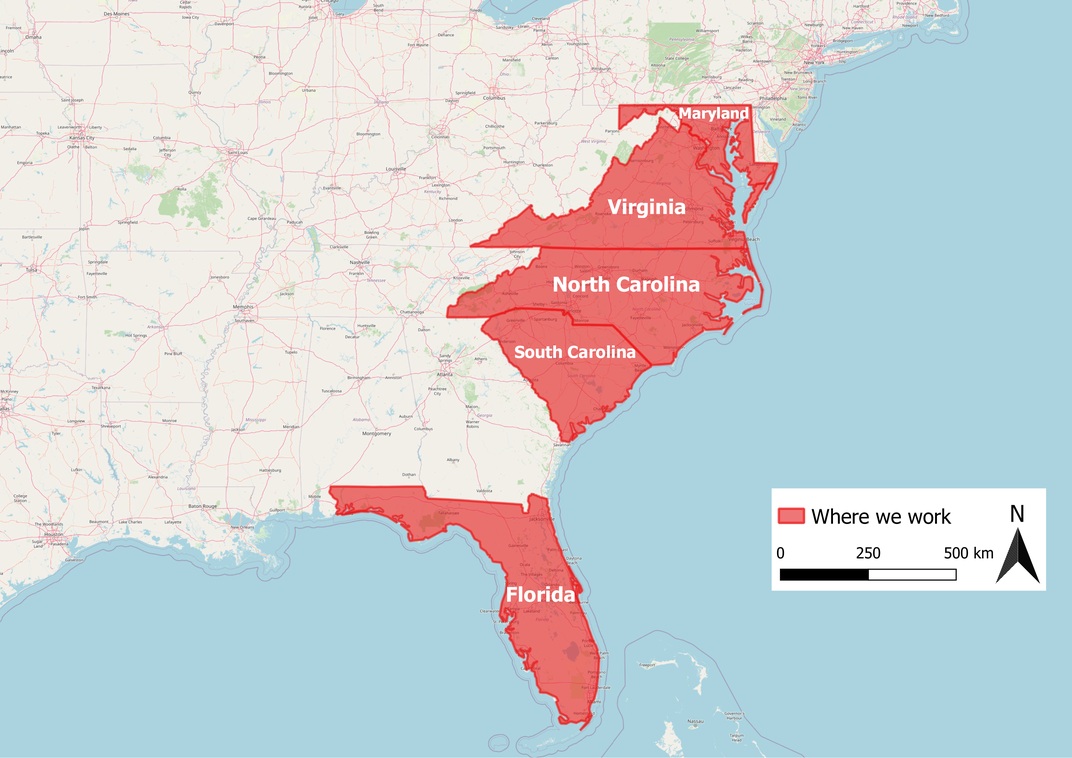The Cownose Ray is a common migratory species that frequents the eastern coasts of the Americas. Smithsonian scientists are tracking this species to gain a better understanding of movement patterns, especially of juveniles who are thought to not return to the Chesapeake Bay in the first few years of their lives.

Length: up to 1 m (3 ft) across
Weight: up to 22 kg (50 lbs)
Cownose Rays have plate-like teeth that are used to crush the hard shells of bivalves like oysters and scallops.

The Cownose Ray is a species that has a history of being misunderstood, especially in the Chesapeake Bay. There have been campaigns to focus on harvesting the rays in an effort to minimize their impact on the shellfish industry, but we now know that they were wrongly implicated in shellfish declines. Instead, Cownose Rays are likely to play important roles in the coastal food web, but there has been surprisingly little scientific study of Cownose Rays. Fisheries for the species are currently unregulated, despite evidence that Cownose Rays may be susceptible to overharvest.
Movement ecology data contributes to our knowledge of how hunting can impact this species of rays. Their migratory patterns are strongly associated with their breeding periods, with large numbers of males and females moving into the bay during the summer and the females giving birth and then mating again during June/July. Cownose Rays are caught in recreational fisheries and as bycatch in commercial fisheries. The species has a very slow reproductive rate—only giving birth to one pup a year with a maximum of fifteen pups throughout the female’s lifetime. This life history trait means the species can only support small-scale fisheries, and that recovery from overfishing would be slow. However, fisheries for the species are not regulated anywhere in the species range, and current harvest rates are unknown. One of the biggest mysteries that we are working to solve with colleagues at Virginia Institute of Marine Science, is that juvenile nursery habitats are unknown. Juveniles (ages 2-4 yrs) do not return to the Bay with the rest of the sexually-mature migratory population.
Smithsonian scientists Matt Ogburn and Chuck Bangley are hoping to discover the movement patterns of both juvenile and adult rays, and have tagged around 80 individuals to date. The acoustic telemetry transmitters that are implanted in the individuals will transmit to receivers at many locations along the coast that can help determine where these young rays go and what resources they might utilize in that time.
Marine Ecologist
Fisheries Conservation Laboratory Smithsonian Environmental Research Center
Post-Doctoral Research Fellow
Smithsonian Environmental Research Center Fish and Invertebrate Ecology Laboratory
“Cownose Rays in the Chesapeake Bay: What Do We Know?” Chesapeakebay.net, Chesapeake Bay Program’s Sustainable Fisheries Goal Implementation Team, 29 Jan. 2016, www.chesapeakebay.net/documents/CNR_Workshop_Report_FINAL_1-29-16.pdf.
Virginia Institute of Marine Science
Curtis and Edith Munson Foundation
Harbor Branch Oceanographic Institute and Florida Atlantic University